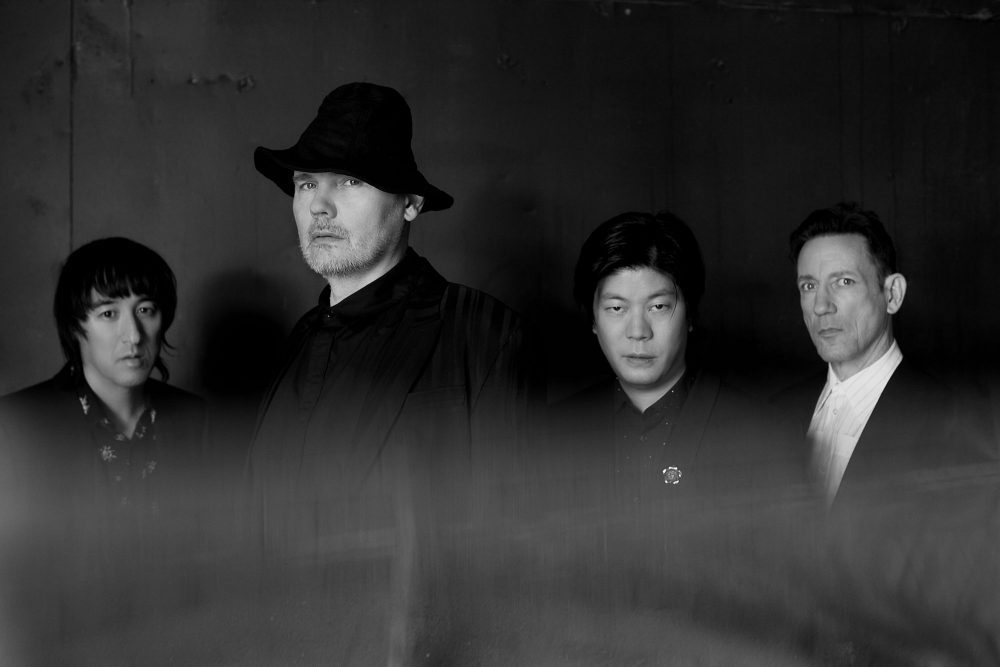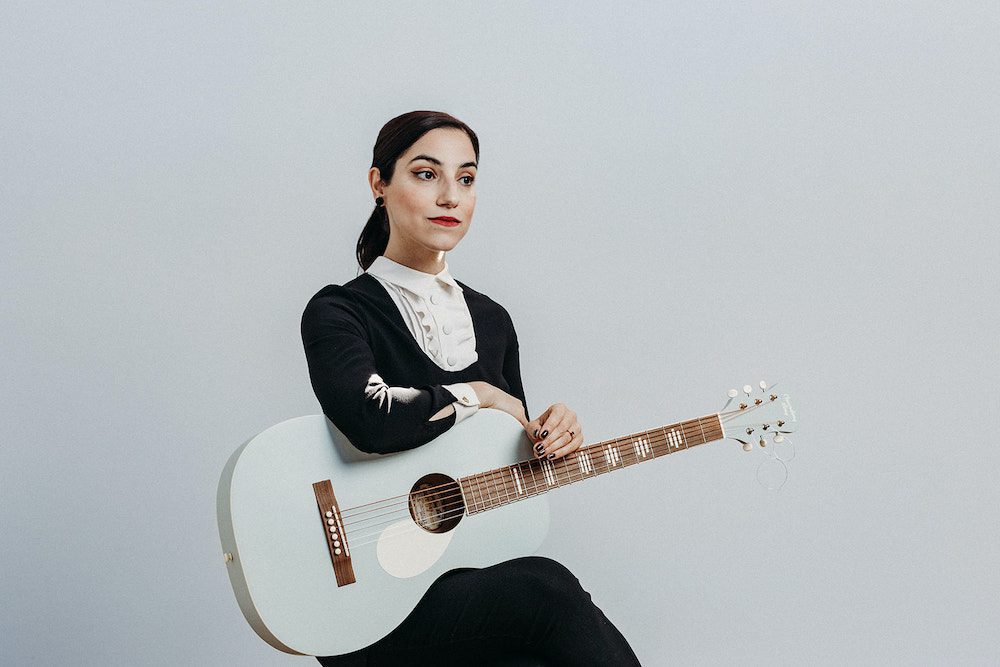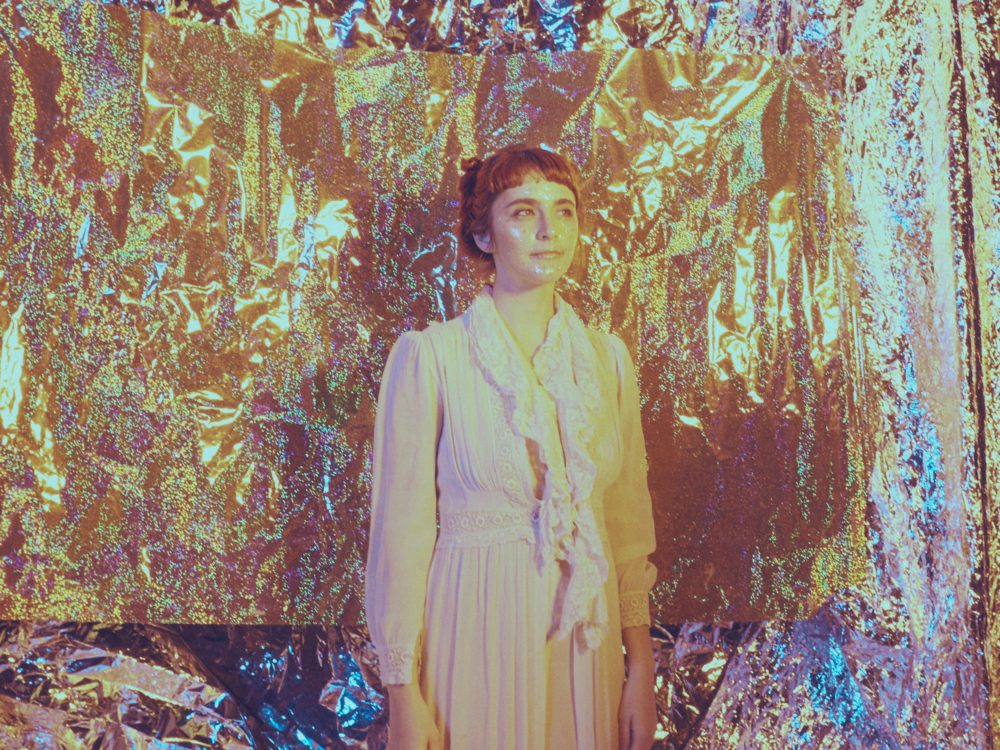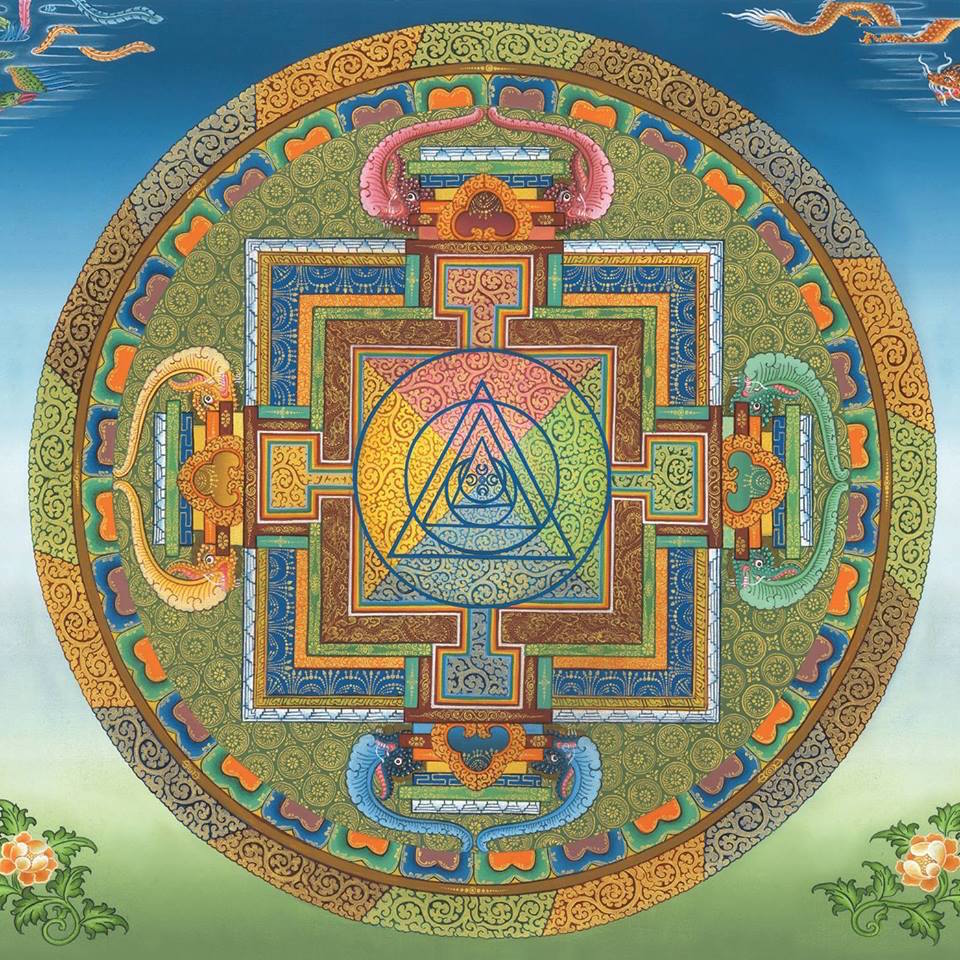
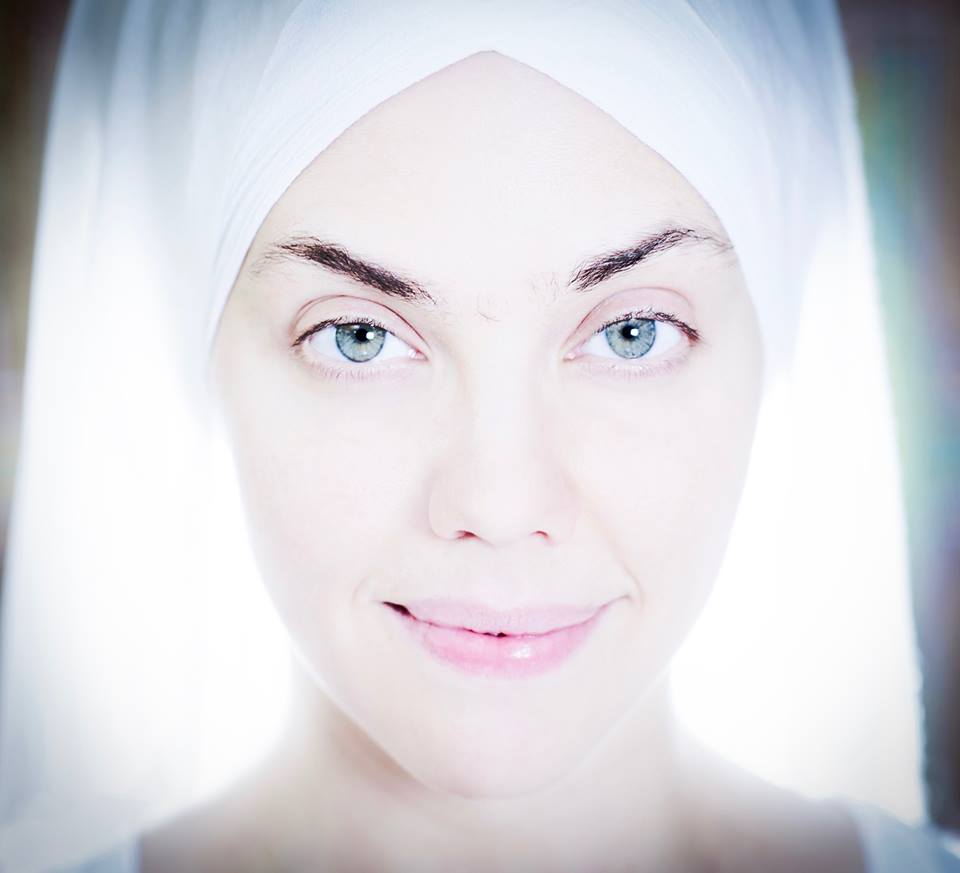
White Sun is releasing their second studio album today, and it can best be described as a sweeping exploration of New Age, through the lens of the Kundalini Yogic tradition, incorporating elements of world music, gospel and pop. The arrangements are thoughtful and intricate, and the production quality reflects a level of expertise rarely heard on albums these days. The players who came on board to collaborate are unbeatable in their respective fields and include Julia, Maxine and Oren Waters as back-up singers, as well as Mamadou Diabate who is arguably the best Kora player in the world. The core band is comprised of Adam Berry on Guitar, Keyboard and Bass, Harijiwan on Gong, and Gurujas, who we got the pleasure of interviewing here, on lead vocals. New Age is having a definitive resurgence in the mainstream, and White Sun’s new album reflects this trend – not only in its convergence of Eastern and Western musical legacies, but also the ways in which it defies existing stereotypes around a genre that has become all too easy to dismiss as hokey. Each track is entrancing and meditative, taking the listener through hand picked chants passed down through thousands of years of Buddhist lineage. Gurujas’ vocal melodies are addicting to say the least, and weave effortlessly through the musical underpinnings of the songs. Though her mantras may be foreign to the listener, the songs feel wholly formed unto themselves, written almost like traditional pop tracks in their structure, containing hooks that could rival any, and instrumentation that is as complex as it is compelling. The music is simultaneously sophisticated and accessible, prayerful and ruminative, without pretentiousness. Yet ultimately, it is simply catchy: at several points throughout the album I had that “Oh! I think know this song!” moment. This speaks volumes on the substantial talent that went into producing it, and perhaps indicates a new direction for new age music, with White Sun leading the charge.
We got to speak with Gurujas about the effort that went into making this beautiful new full-length, right down to the hand-designed mandala that their album art brandishes. Read below and enjoy, AND PLEASE Go grab a copy of the album here or here.
Audiofemme: We’re excited about this album, Gurujas! We’ve been listening to it non-stop since you gave us the download and I have a million questions for you, but first, I want to know how you got started with music?
Gurujas: That is a good question. Well, I grew up in a musical household. My mom played music growing up. She was into piano and studied concert violin in college. So, I started playing piano at a really young age. One of my music teachers in elementary school thought I had perfect pitch. So she called my mom and told her I had to try out for The Cleveland Orchestra Children’s Choir (I grew up in Cleveland.) Itwas really cute! So I tried out for it, and I got to sing with the Cleveland Orchestra. Those were my first performances. I think I was about eleven years old in this choir, and it was so amazing, singing with the orchestra, classical music, seasonal music, stuff like that. So it was really something I pursued when I was younger. When I got to college it was definitely only a hobby. I was just too wrapped up with everything else. So then, a little bit later after I moved out to LA after college,I was singing a little bit of backup and eventually I started singing lead in this band White Sun formed by Harijiwan.
Audiofemme: So the band has existed for a while. I haven’t done that much research on them.
G: Yeah, well there’s not a lot you’d be able to find out about them. I don’t think there’s a lot online. We decided not to do a wikipedia entry and instead lay low a little while. Harijiwan formed the band I think in 2009. I didn’t start singing as the lead singer until 2015, I guess, or 2014, my dates are a little bit wobbly. We released our first album in 2015, and I had released a couple singles in my name before that.
Audiofemme: I’m psyched about new age music! I feel like it’s having a resurgence right now, and we don’t have that much coverage of it on the site, but I think that it’s really beautiful. I want to talk to you about all the pieces that went into this. Like how did you guys get all of these players together. I know there’s a lot of people playing on this album. That must have been an immense undertaking to get everybody in the studio.
G: Yeah. It was immense! But it felt very natural. This album felt like a flow. It really flowed out of us. And it was a labor of love. It took a year to make, but at the same time that it was very intense it was also very easy, if that makes any sense. It seemed to come together in a really graceful way. Sort of effortlessly. The Kora player is really interesting. Because I’ve been a fan for a while. He’s an incredible player – definitely one of the greatest players in the world. There’s no doubt about it. It was very hard to get in touch with him, because the contact form on his website didn’t work, and he doesn’t have contact information listed anywhere else. There’s another musician who he’s played with before who plays the balafon whose name is also Mamadou. And so I contacted him and I think I was sort of hoping that he was the Kora player and he wasn’t! But he was like ‘if you’re looking for the Kora player here’s his email.’ It was a stroke of luck! A stranger that I accidentally contacted gave me Mamadou’s phone number and email. So that was helpful.
Audiofemme: What is he like as a person? What is your band like in general?
G: He’s such a special person, after getting to know him. It’s funny, with the band…we have this thing andI haven’t really worked out why this is, but everyone is massive, besides me. Adam is built like a linebacker. Mamadou is bigger than Adam. Adam has a blackbelt in jujitsu and he’s enormous. I really don’t know how tall he he is. He’s just like a big person, you know. And then Mamadou…
Audiofemme: Like almost so tall that you can’t measure it anymore…?
G: Exactly! And then Mamadou is the same. He has to be taller than 6’4”, because I think Adam is 6’4” and he’s taller than Adam. But I don’t know like, they’re just huge and they make me look like a midget! There’s this other guy that we play with, Arjuna, and Arjuna is huge too. We were looking at musicians working on album number three, and we were looking at different possibilities, and Adam pulls up this guy on the screen, and we’re listening to him play, and he is towering over his band members…I’m like ‘what is this!?!’
Audiofemme: You could also just form a football team if you wanted to…
G: Exactly. There may be something about White Sun that just requires you to be huge, I’m not really sure.
Audiofemme: So does Adam write all the songs? Does he do the arrangements?
G: So I write the melodies for the songs. I’ll come to the studio and I’ll have the song written and I’ll play it on the harmonium. Sometimes it’ll just be a skeleton… And then sometimes it’ll be fully formed, from start to finish. But I don’t write any of the string sections. Adam really fills it in. He writes the majority of the instrumentation. We also have players come in and write their own parts. Abhiman, our Tabla player, he comes in and he puts his head together with Adam and come up with ideas, but will also have his own ideas and he create his own parts. And then Gabe Witcher, who played Fiddle on this last album totally created his own parts. He just came in and played whatever he wanted because he’s such an incredible musician. He’s just amazing. Same with Mamadou. He had the chords with the original melodies but he played all his own parts. But Adam has these beautiful auditory visions that he really wants to hear so yeah, musically, Adam does the majority of the instrumentation, unless there’s a player that comes in and we really want to hear what that person comes up with… It’s a really beautiful collaboration. And then Harijiwan has a really incredible ear for what fits and what doesn’t fit. He really helps refine the direction of the tracks, not only musically, but energetically. He can really hear if something needs to be tweaked to match the rest of the song, or if something’s too heavy for a particular vocal, it’s like the bass needs to be moved a couple of DBs, he’ll hear these really subtle things inside the music.
Audiofemme: That’s great. It’s a really good way to collaborate because he (Adam) is obviously the anchor of the band but can give people the freedom to add their own personal contribution…Oh! And you had gospel back up singers coming in, which is amazing. I was researching them, it’s incredible that you got them.
S: They’re so incredible! What happened with them is that they’re there’s this lady Bobbie Page, and she works in LA and she’s a music director. So Adam’s known her for years, and he called her and told her that he wants some gospel singers in the studio. And she goes okay great! And she literally showed up with Carmen Carter, Julia, Oren and Maxine Waters, I mean, she showed up with all these people. And we were like ‘Oh, hi! Julia!? Can I get you some water, Carmen Carter?’ It’s so so cool.
Audiofemme: It’s so cool that you had no idea that that was even going to happen.
G:Yeah, I really didn’t. I love working on these melodies on these songs, and then all these different elements come together for it…Its incredible to hear it humming in my head, and then to hear it with all these incredible back up singer legends on it, it’s amazing.
Audiofemme: It really is like, so many people don’t get the opportunity to work with world class musicians. It’s like, you can hear the difference, of course, but it’s also such a great experience to get to do that.
G:Yes! It’s the best experience ever. Sitting there and soaking it in and watching them, listening with the headphones on…
Audiofemme: That’s so great. Yeah so with these chants, how did you curate that? Which ones to use?
G: Well that’s a great question! And actually the answer is very simple because very little thought goes into which mantra i’m going to chant. I know a lot of them from my yoga practice so I’ll sit down with a harmonium – that’s how I compose – and I’ll start playing some chords, and I’ll just start playing some notes. And it’s really just whatever I want to hear is what I’ll play. Whatever sounds good to me. And some days, nothing sounds good to me, and other days everything sounds good to me. The melody will dictate the mantra. So something will fit, and it will usually be the only thing that fits. It’ll be something very specific. And like I said I’m familiar with them anyway. So, I don’t have to go look for them.
Audiofemme: That’s amazing. The songs sound so meditative when you listen to them. I also love the ordering of the tracks. It sounds like you were intentionally bringing us on a whole journey with the album.
G: Oh thanks for noticing that! We really tried to do that. We really wanted to take the listener on a journey, and we did work had on the track order, so I’m glad that you noticed.
Audiofemme: No, it’s palpable, it really is, you can tell. It’s nice to listen to something that’s cohesive. A lot of music nowadays, is very disaggregated, especially in how bands throw an album together. I like yours is both esoteric and accessible at the same time.
G: Yeah, that’s the music that we write because that’s the music we want to listen to. I would get bored if I was just chanting the same thing for seven minutes, and if you were listening to that, you’d be bored too. We try to make music that we like. And there’s nothing wrong with chanting the same thing for seven minutes. But there’s something wrong with me chanting the same thing for seven minutes because I just won’t be entertained by that song. Other people can do it and they pull it off and they love it. It’s just not my style. At least, in music. I chant stuff all day long all the time, but it’s different for me in music. We have to make music that we love. I think that what’s nice about it is I don’t have to write lyrics, and I’m not coming up with the mantras myself. They’re prewritten by yogis 5,000 years ago. They have a vibratory frequency and a vibratory musicality, and that’s what makes them feel meditative. It took them 5,000 years to come up with this stuff. It was channelled and it was taught and it was passed down orally. It came from scriptures, and all these different places and all these different practices and all these saints and sages and monks and yogis and masters that put this stuff together. I can’t do that, and I’m not going to try to do that. And all I have to do is repeat the words and they have a specific vibratory field. And when they’re chanted correctly, it’s palpable and you can feel the meditative effects of it. So, all I have to do is make sure I’m pronouncing it right, and it gives people a feeling that normal pop music doesn’t give you!
Audiofemme: You can definitely feel that energy. It’s good to have your explanation of it, because a lot of people might not even know what they’re tapping into when they listen to this. It’s really really cool.
G: Yeah it’s such a science. These old yogis understood the neurons in the brain, they understood the atoms, they understood how the body worked on a very intimate, deep level. And they understood the science and technology of it. Western medicine is still figuring out the science. There’s studies that are being done on the effects of mantras and meditation in the brain and stuff like this. But the yogis of old really understood how these things can have a healing effect on the mind and body.
Audiofemme: Yeah, I do feel like we’re catching up here. I was telling you about a friend who teaches a graduate course at UCLA on mindfulness…I think that people are finally acknowledging it as scientifically plausible.
G: Exactly! That’s what I love about it is that it is a science. And I think that there’s a misconception that it’s religious or something like this. But like you said, your friend at UCLA is figuring out and doing research to prove that it is a science, it is a technology, because it has an exact cause and effect. And that’s all we’re interested in. To make people feel better, to make them feel better as quickly as they can.
Audiofemme: So I love the album art, I was going to ask you about that as well. I want to hear about how you went on this trip, to have this monk design this for you, and where the inspiration for it came from, and the meaning behind your logo… It sounds like it was an incredible part of this process.
G: Oh wow that’s really cool! You’re the first person to ask me that, about the logo. And it sort of blows my mind that people haven’t asked that. Harimander, who is my husband, was going really deeply into the teachings, and the energies of the sixteenth Karmapa. The Karmapa is the head of the Kagyu school of Tibetan Buddhism. So he’s similar to the Dali Lama in that the Dali Lama is also the head of one of the schools of Tibetan Buddhism. So the Karmapa is a very high being… Harimander felt that he had some kind of energetic upgrade, I’d guess you’d call it, on this day. And then he started messing around on the computer, and this logo came out of his head. And we didn’t know at the time what it was. Was it a logo? Will we use it? We don’t know. But it really has a power to it. And it really moves and flows.
And the mandala, i’ve always loved Thangka paintings, I’ve been fascinated by them for a long time. How beautiful they are, how intricate they are, how people spend a lifetime perfecting them and how the technique has been passed down for thousands of years. In Nepal, I connected with some Thangka painters and there were these two in particular that I thought were incredible. And I commissioned a thangka from one of them that I have hanging on my wall, and the other did this album cover us. We worked for months and months on this. Well, he did, and we went back and forth with sketches and exactly what it would look like. I would take pictures of things and send it to him, and we worked through a translator Raju. Raju’s my hero because he made it all possible. And then this thing came in the mail one day and I almost fell over when I opened it…It sounds a little bit woo woo, but I really feel that there’s a lot of energy around this project that I can’t see, and I feel that we have a lot of support energetically. The fact that this stuff comes together the way it does, it’s sort of miraculous to me.
Audiofemme: No, it’s definitely very — every little detail fits with the greater whole, I’m so impressed. I can’t say it enough!
G: Thank you so so much. I’m so so grateful for that! We are super new, our first album was only released last year, so if you say something like that it makes such a big difference. It really…
Audiofemme: I think it’s gonna do really really well. It sounds like you’re already getting some really good press on it.
G: Yeah I think that we are. We’re getting some great feedback on it, and some great press, as you said. In particular talking to you, and talking to audiofemme is really incredible to me and to us, because I love who audiofemme is, I love your website, I love your writers. I think you’ve done an incredible job. I think the music you review is so authentic and really the type of music that you wouldn’t usually associate us with, but I think that we belong with.
Audiofemme: Aw, thank you!! Really sweet of you. I was going to ask you, as one of our round-up questions. I wanted some recommendations on who you’re listening to in that community right now, so we can check some of it out.
G: Yeah, totally! Gosh. I’ve met so many incredible people, I’m struggling with where to begin. One person you should check out is Ricky Kej. I love what he’s doing. He released a new age album, and this year he just released a world music album. He’s really using his music to change the world. That might sound melodramatic, but it’s true in his case. There’s an artist named Peia who I think has an incredible voice and is doing a lot of beautiful things.
And I also love normal artists. I’ve been listening to a lot of Bob Dylan. Because he’s a storyteller, and he’s the best storyteller of all time arguably. I’m also fascinated to be grouped into new age, because, like most artists, I never thought of myself as belonging to a category, because I never framed it in those terms. But the fact that we write yoga music and the recording academy defines yoga music as new age music means that we are a new age band! Which we totally embrace. It’s just like we never made the decision to make new age music.
Audiofemme: It’s kind of by default. Well I think that’s wonderful. And I think that it’s good to shift people’s misconceptions about it as being cheesy.
G: Like elevator music!
Audiofemme: Yeah exactly. I think it’s good that you can move the dial on that a little bit. Do you guys play live? Do you tour or anything?
G: Yeah we are going to tour. But right now we decided to work on album number three. SO we’ve been in the studio working on number three, and i’m really excited about number three. I mean, I think that we did better on number two than number one, but number three is coming up at the moment. So we’re not going to tour until that’s done.
Audiofemme: Do you guys have a timeline for the third album? Are you using the same structure, bringing in players to collaborate with you on it?
S: Yeah I think so. We’re not exactly sure when it’s going to get done. We don’t have a calendar for it, we didn’t have a calendar for this one, and then we released it. SO we don’t hold ourselves to a schedule. But we are going to bring in some players, and I have some things in mind. I love our tabla player. I’m very attached to him and his particular sound, as well as the sound of his tabla. But there’s some new people I want to introduce to the mix.
Audiofemme: We’re super excited for it! Please keep us posted on your progress. We should wrap up – I’m sure you have a million things to do, but thank you so much for talking with us, it was an honor!
G: Such an honor for me too!
***Keep up to date on White Sun by following them on Facebook here, and order/Download your copy of the new album here or here.***


